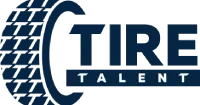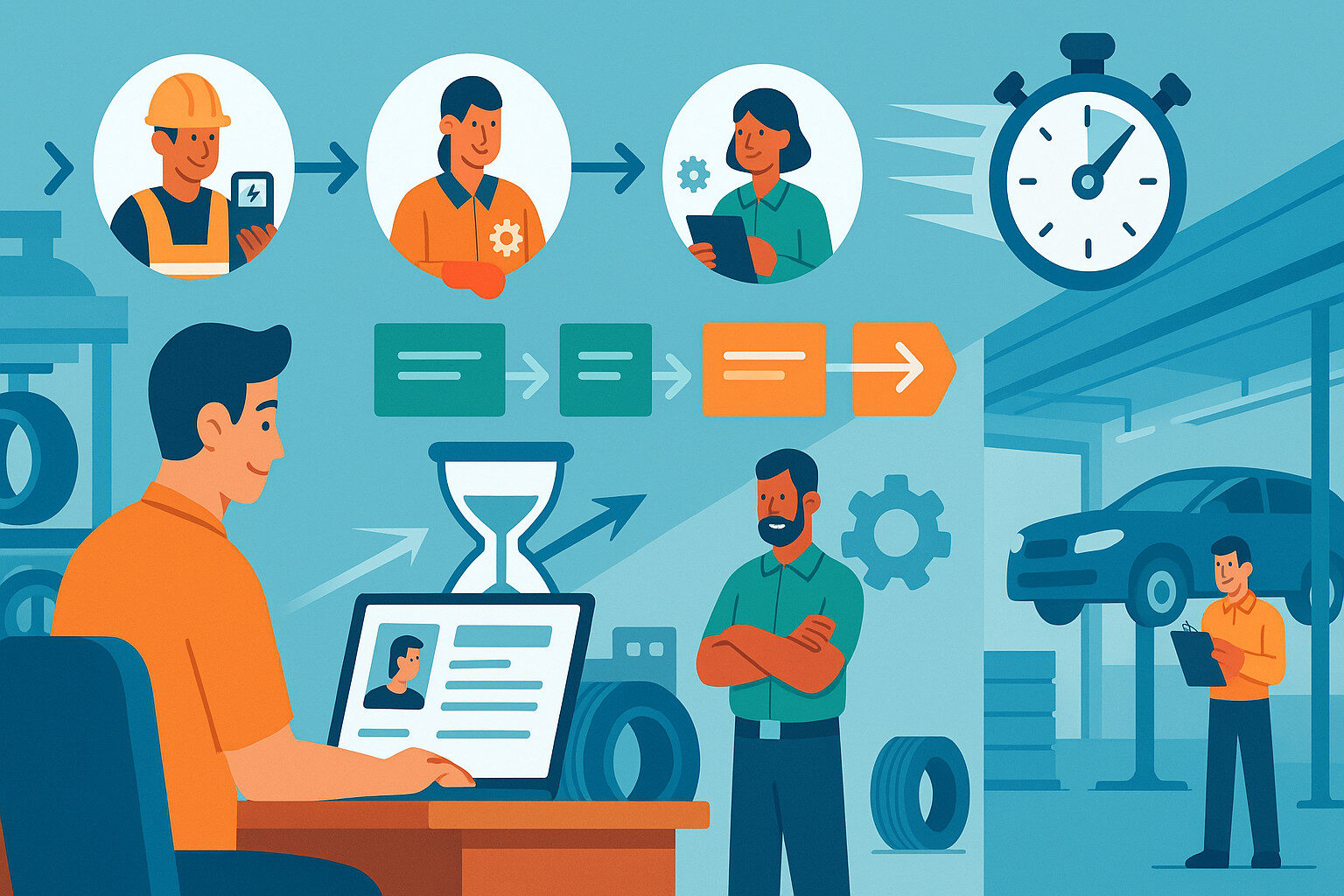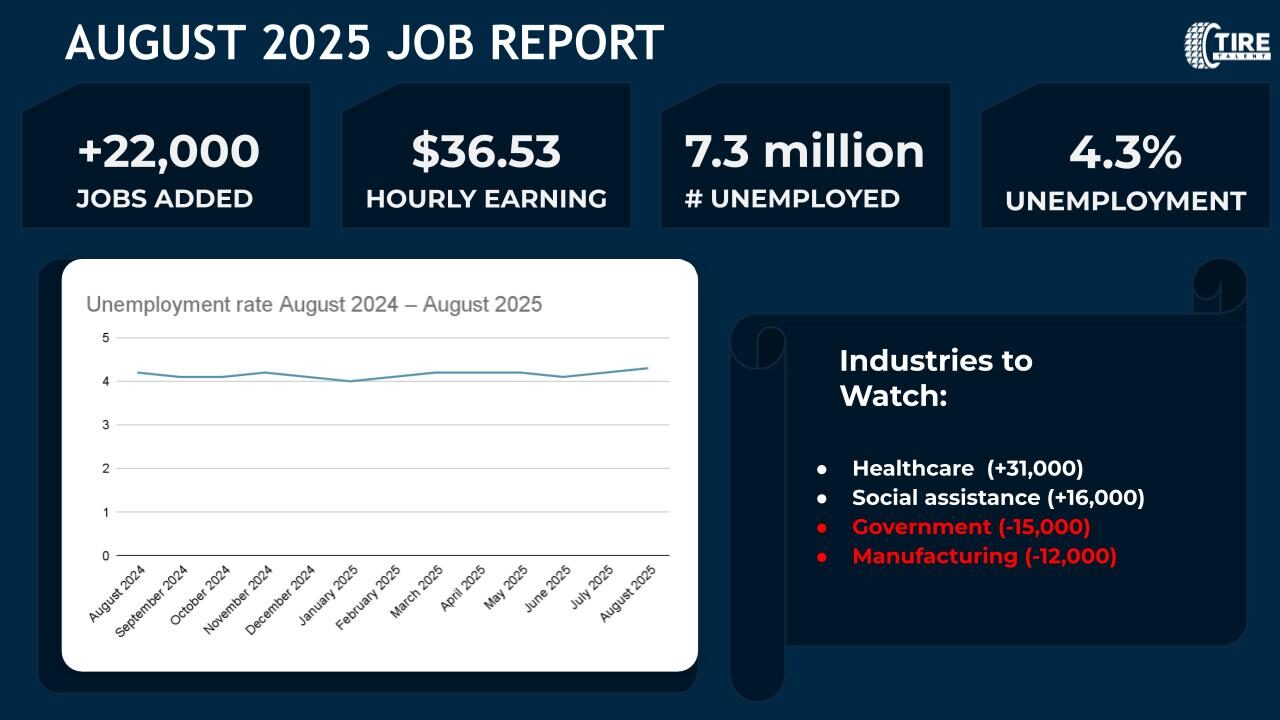The tire industry recruiters you choose can be the difference between keeping production on plan—and watching downtime, missed SLAs, and churn eat into margin. In today’s market, speed and accuracy matter more than ever: the best candidates move fast, plant staffing windows are tighter, and service demand is steady even as product mix and technology evolve. If you manage a plant, a multi-store service network, or a national distribution footprint, this guide shows exactly how specialized recruiters collapse time-to-hire while improving quality, retention, and safety outcomes.
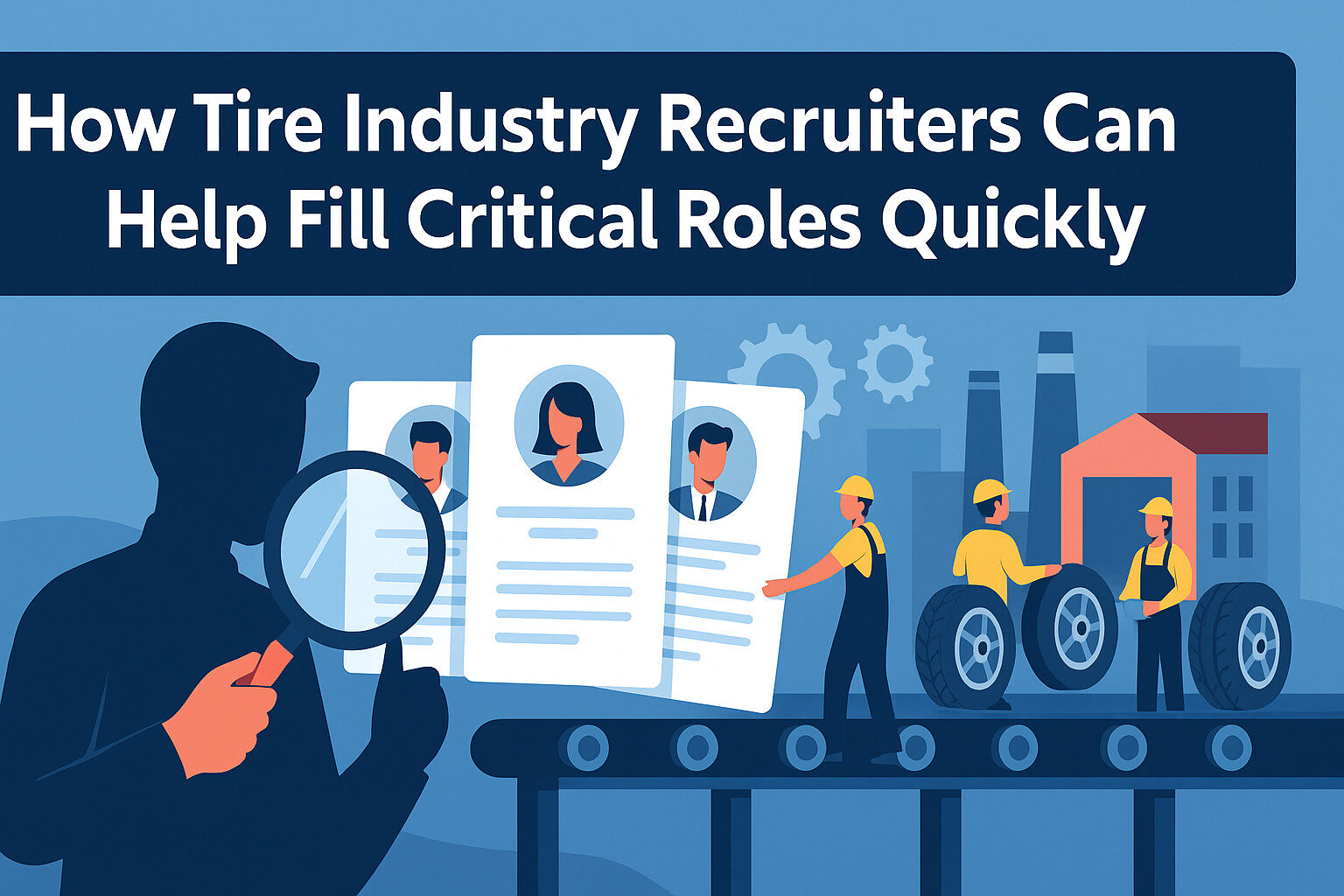
Why “fast” hiring isn’t enough—you need “fast and right”
Hiring quickly with the wrong fit only moves risk down the line. Mis-hires in critical roles—maintenance technicians, quality leaders, plant supervisors, diagnostic/EV techs, supply chain planners, regional sales leaders—show up as:
- Unplanned downtime and scrap/rework
- Warranty claims and comeback rates
- Safety incidents and inspection findings
- Customer churn after missed service windows
- Burnout for the rest of the team covering gaps
Specialized tire recruiters solve for speed with signal. They blend real pipeline depth in tire manufacturing and automotive service with competency-based assessment tuned to the work: PLC/controls, APQP/PPAP, EV/ADAS procedures, CMMS, OEE/OPEX, OTIF, and customer documentation discipline.
The roles that most often stall—and what makes them “critical”
Below are the roles that most often create cascading impact when left unfilled. (Keep your tables crisp—no long sentences.)
Area | Critical roles (sample) | Why it matters |
Plant manufacturing | Maintenance Techs (electro-mechanical/PLC), Production/Shift Supervisors, Process/Quality Engineers, Plant Manager | OEE, MTBF/MTTR, first-pass yield, compliance (ISO/IATF/EHS) |
Distribution & logistics | Supply Chain Manager, Materials Manager, Warehouse Manager, Route/Logistics Lead | OTIF, inventory turns, freight cost, customer service |
Retail/commercial service | Master/Diagnostic Tech, EV/Hybrid Tech, Shop Foreman, Commercial Service Manager | First-time fix rate, comeback rate, safety & documentation |
Sales & revenue | Regional Sales Manager, Director/National Sales, Key Account Manager | Territory coverage, price/mix, margin protection |
Cross-functional leadership | Operations Manager/Director, Quality Manager, EHS Manager | Cost-to-serve, risk, customer audits, employee retention |
These aren’t “nice to fill” roles—they’re capacity and reputation roles. Every unfilled week increases cost and risk.
What makes tire-specialized recruiters different from generalists
1) Industry-calibrated scorecards
A good tire recruiter doesn’t ask generic “tell me about yourself” questions. They assess competencies tied to manufacturing and service realities:
- Maintenance/controls: PLC troubleshooting (Allen-Bradley/Siemens), VFDs, sensors, ladder logic reading, CMMS hygiene, LOTO and arc-flash awareness.
- Quality: APQP, PFMEA/Control Plans, SPC/MSA, 8D/CAPA, customer portals & PPAP documentation.
- Service/diagnostics: CAN bus basics, HV safety, ADAS calibration (static/dynamic), torque discipline, photo/video documentation.
- Supply chain: S&OP/IBP, MRP parameters, safety stock modeling, supplier scorecards, TMS/WMS fluency.
- Sales leadership: territory design, pricing/discount governance, forecast accuracy, key account planning, CRM pipeline hygiene.
2) Real pipelines (passive talent)
Tire-focused recruiters maintain warm relationships with plant leads, master techs, and commercial service managers who aren’t on job boards. That’s how you get ready-made shortlists in constrained metros.
3) Market comp intelligence (by metro and skill)
Posting a national median wage in a hot market slows you down. Specialists index to local wage bands and apply skill differentials (EV/ADAS/PLC) so you lead with the right range and close faster.
4) Compliance and safety awareness
From OSHA and EHS to customer audits, the best recruiters know what a pass/fail looks like and surface talent with documentation rigor—not just wrench skills.
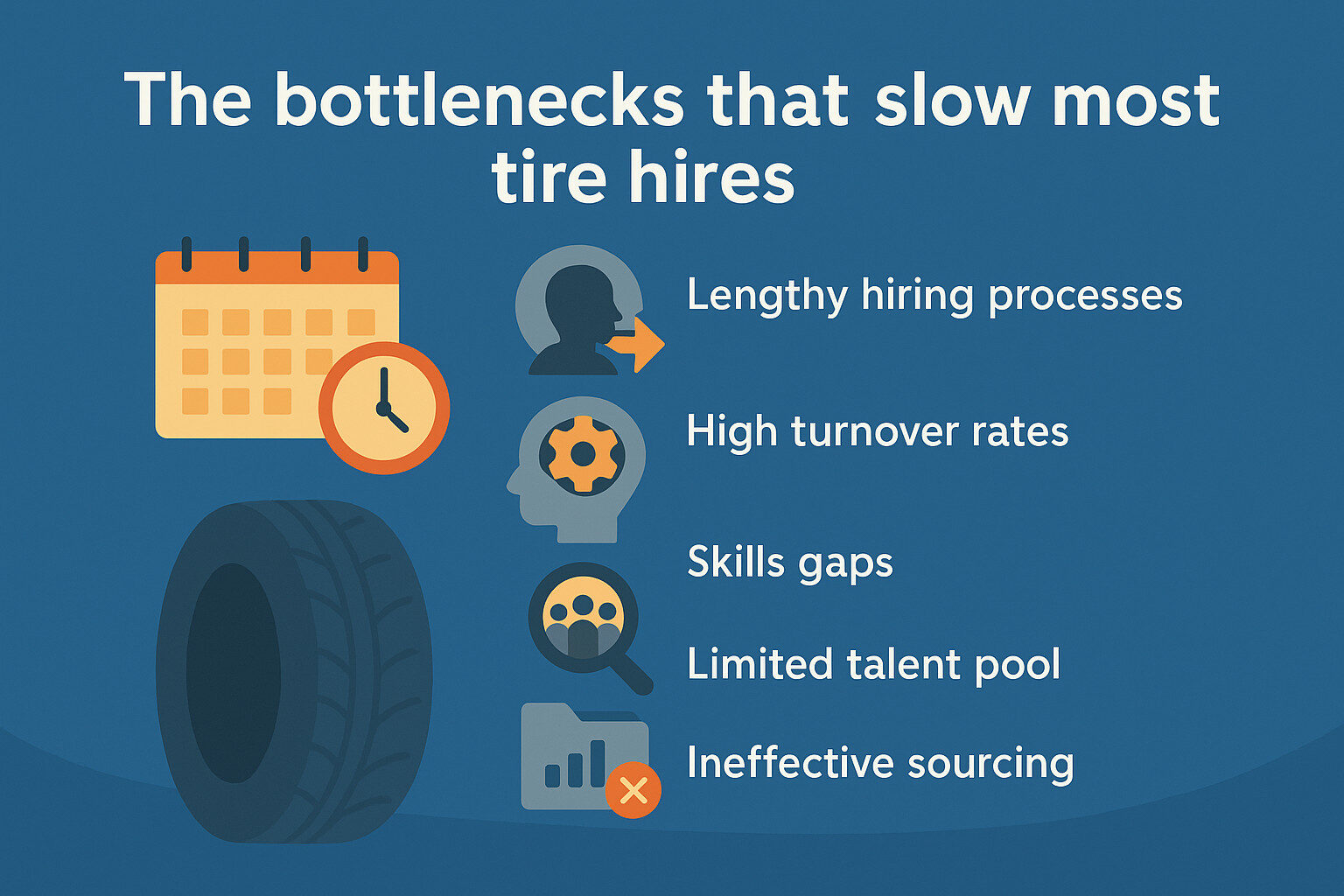
The bottlenecks that slow most tire hires (and how recruiters clear them)
- Job descriptions that chase tenure, not outcomes
Shift to competency-first descriptions (what the hire must do in 90 days). Recruiters reframe JDs around outcomes and tools used, not years of experience alone. - Too many interview steps
Great candidates have options. Collapse to phone screen → bench/simulation → structured panel → decision. Specialists design the bench test and the scorecard. - Slow feedback loops
Every 24 hours of silence costs you pipeline. Recruiters enforce SLA-driven feedback so you can offer within 48 hours of the onsite. - Offer misfires
Low or vague offers stall. Specialists calibrate ranges up front, include start date, shift pattern, 30–60–90 plan, relocation or tool allowances, and sign-on triggers tied to safety modules or credentials.
A proven, 6-part playbook recruiters run to fill roles quickly
Part 1: Demand planning you can defend
- Forecast by site/store: backfills + growth + skill mix (ICE/hybrid/EV; controls vs mechanical).
- Identify A/B role shapes: e.g., PLC-heavy vs. mechanical-heavy maintenance.
- Translate to comp bands with skill adders (HV safety, ADAS, PLC programming).
Part 2: Targeted sourcing with pre-qualified pools
- Community colleges/trade programs (co-branded cohorts and tuition support).
- Veterans and Guard/Reserve pipelines (MOS translation for maintenance/logistics).
- OEMs, tool vendors, and calibration partners (lunch-and-learns, micro-credentials).
- Passive taps: former colleagues, contractors with strong site reviews, internal silver medalists.
Part 3: Assessments that predict shop-floor performance
- Maintenance bench test: read a simple ladder, identify a sensor fault, outline a LOTO.
- Diagnostics test: can the tech interpret a DTC tree, explain CAN basics, and document the fix?
- Quality: short APQP scenario—spot the weak Control Plan; write a crisp 8D.
- Recruiters administrate and score the same day.
Part 4: Interview architecture built for speed
- 20-minute phone screen (safety mindset, communication, documentation).
- Onsite: bench/simulation + structured panel (technical lead + safety + HR).
- Decision meeting immediately after; recruiter drafts the offer same day.
Part 5: Offer design that closes
- Clear band, shift, start date; relocation/tool stipend as needed.
- Skill pay differentials (EV/ADAS/PLC) spelled out; pathway to the next differential.
- Early progress bonus tied to training milestones (e.g., ADAS calibration sign-off).
Part 6: Onboarding that sticks (and feeds referrals)
- 30–60–90 plan; mentor assigned; one “quick win” project in 30 days.
- On-the-clock training blocks; safety refreshers in week one.
- Referral program launch during onboarding (multi-stage bonuses at 30/90/180 days).
Data signals that tell you your recruiting system works
Measure these weekly. Keep them short and scannable.
Funnel KPI | Target |
Time-to-first interview | ≤ 5 business days |
Onsite → offer | ≤ 48 hours |
Offer acceptance rate | ≥ 70% |
New-hire 90-day retention | ≥ 85% |
Ops/quality KPI | Target |
Plant: MTTR trend | Improving or flat |
Plant: first-pass yield | ≥ site target |
Service: first-time fix rate | ≥ 90% |
Service: comeback rate | ↓ month over month |
Recruiters should report these alongside pipeline stats (submittals, interviews, offers) so you can see cause → effect.
How tire recruiters help each function—tactical examples
Manufacturing maintenance & controls
- Build shortlists from techs who’ve worked with your controls stack (Allen-Bradley, Siemens) and similar equipment (presses, mixers, extruders).
- Run a PLC/controls bench test before your team invests time.
- Recommend comp adders for night shift + PLC to win scarce talent.
Quality & EHS
- Shortlist candidates who have owned APQP/PPAP with customers like yours; verify SPC/MSA comfort and 8D quality.
- Screen for audit readiness and documentation habits; reduce customer escalations.
Supply chain & materials
- Source managers who have tuned MRP parameters and safety stock in seasonal or multi-SKU environments; confirm WMS/TMS fluency and supplier scorecard discipline.
- Prioritize planners who have lived through allocation/expedite cycles without burning cash.
Retail/commercial service
- Present diagnostic/EV techs who can document as well as repair; verify HV and ADAS basics.
- Staff commercial service with managers strong in route scheduling, DOT safety, and warranty adjudication.
Sales leadership
- Pull RSM/Director candidates with the channel mix and price/discount governance you use; check forecast accuracy and key account planning artifacts.
- Coach comp design & territory mapping to avoid first-quarter surprises.
Comp strategy: pay what the market pays—then win on growth and safety
- Localize compensation: pay to the metro, not the national average.
- Add skill differentials: EV/ADAS/PLC adders are cheaper than chronic vacancy.
- Sell the career ladder: show exactly how an operator becomes a lead, how a tech earns an EV/ADAS or PLC differential, and how a lead becomes a supervisor.
- Don’t forget scheduling: predictable rotations or four-10s are a real perk.
Employer brand: why the best people will pick you
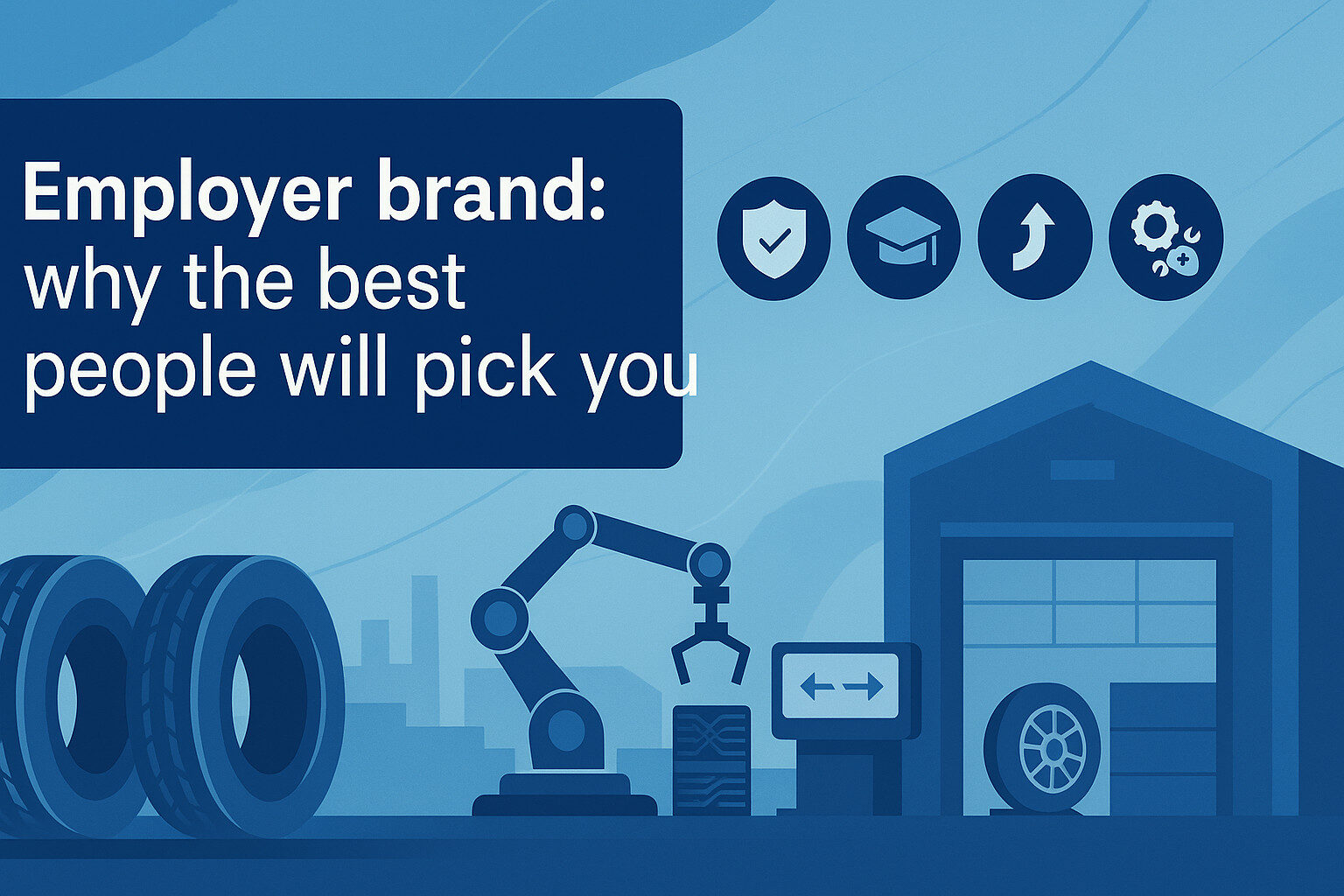
Recruiters can’t out-pitch a weak story. Codify yours:
- Safety record & investment: talk about PPE, tools, calibrations, and recent improvements.
- Modern tooling: diagnostics gear, calibration lanes, CMMS, robotics—signal a future, not a grind.
- Growth paths: real examples of techs and operators who advanced.
- Community: training on the clock, relocation help, referral rewards, and team recognition (e.g., “Golden Wrench/Hardhat” awards tied to KPIs).
Turn these into 60-second videos and photo stories; recruiters share them pre-interview to increase acceptance rates.
Mistakes to avoid when you’re in a hurry
- Posting a unicorn JD with every acronym under the sun and a below-market range.
- Adding interview steps when a better bench test would give you more signal.
- Waiting for perfect instead of hiring a high-probability learner with adjacent skills.
- Hiding the range or the shift; candidates won’t guess—they’ll bounce.
- Under-onboarding: no mentor, no quick win, no training plan—sets new hires up to fail.
A 30–60–90-day hiring sprint your recruiter can run now
Days 1–10: Reframe and relaunch
- Rewrite top five JDs as competency-based with outcomes.
- Set local bands + skill adders; publish the range.
- Approve bench/sim tests per role (maintenance, diagnostics, quality).
- Launch referrals and passive outreach to silver medalists and alumni.
Days 11–30: Interview flow + first fills
- Move to phone screen → bench/sim → structured panel → decision.
- Enforce 24-hour feedback SLAs; offers within 48 hours.
- Kick off one school/military partnership per site; schedule an on-site day.
Days 31–60: Onboarding and proof
- Deliver 30–60–90 plans for every new hire; assign mentors.
- Start on-the-clock training blocks (HV/ADAS/PLC or APQP refreshers).
- Publish your safety and career ladder story internally and externally.
Days 61–90: Scale the flywheels
- Report weekly KPIs (funnel + ops).
- Spotlight success: credential bonuses, promotions, recognition awards.
- Expand the working model to the next three highest-impact roles or sites.
FAQs (for HR, plant managers, and service leaders)
Q: Can’t our internal team just do this?
A: Internal HR/TA is essential, but tire-specific recruiters bring pipelines, technical assessments, and comp intel you can’t spin up overnight—especially in constrained metros.
Q: Do bench tests scare candidates away?
A: The opposite. Strong candidates prefer a fair test to six rounds of interviews. You’ll close faster because both sides see fit clearly.
Q: How do we keep speed without risking quality or safety?
A: Replace extra interview rounds with structured assessments and scorecards. Keep the same rigor—just move it earlier and make decisions faster.
Q: What if our brand isn’t flashy?
A: You don’t need “flashy.” You need a credible safety and growth story—modern tools, training on the clock, predictable schedules, and visible paths. That’s what converts experienced techs and operators.
Bottom line
The tire labor market rewards companies that move decisively and competently. Specialized recruiters accelerate both. They know the work, maintain ready-made pipelines, assess what matters on the shop floor and in the bay, and help you design offers and onboarding that stick. Pair their industry expertise with a clear internal process, and you’ll fill critical roles quickly—without trading speed for quality or safety.
If you want help turning this playbook into scorecards, bench tests, and a 90-day sprint tailored to your plants and stores, TireTalent can deliver a shortlist fast.
